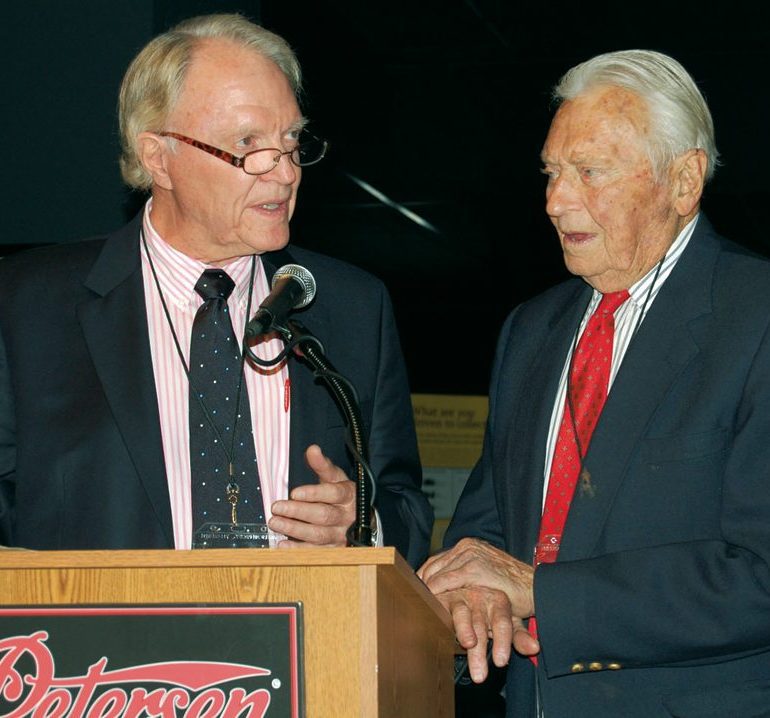Phil Remington, universally recognized as one of racing’s finest craftsmen, has passed away at the age of 92. Remington left his fingerprints all over seven decades of racecar design innovation, with many of today’s standard practices being solutions he created on the run for problems that popped up in his path.
Phil began his journey through motorsports history as one of the original Southern California hot rodders, building and driving “lakesters” at legendary top-speed venues like the Muroc and El Mirage dry lakes. Returning from flight engineer duty with the Air Force in WWII he continued his education working with Indycar builders Emil Diedt and Luigi Lesovsky. There he built a two-seat sportscar for San Francisco industrialist Sterling Edwards whose innovations included a fiberglass body, the adaptation of Beech aircraft spot brakes for automotive use and the introduction of recapped slick tires for road racing.
Soon, however, he was on to his next project, tending Lance Reventlow’s Scarabs for sports car racing and Formula One, but when Reventlow subsequently sold his operation to Carroll Shelby, Phil “went with the building” as he put it. He became the heart of Shelby’s organization, in quick succession shepherding the Cobra team to its Manufacturers World Championship, and then turning Ford’s GT40s into worthy victors at Le Mans. Leaving Shelby American in the late ’60s he hooked up with Dan Gurney, and worked at All American Racers for the rest of his life.
He was duly proud of his role in Ford’s and Shelby’s successes at Le Mans, building reliability and performance into those cars, as he had with the original Cobras, but considered the record-shattering 1972 Eagle-Offy Indycars his most satisfying project because “they worked far and above anything else at the time.” Phil may have been the master of knowing how to fix things, to improve them and make them work better, but he preferred everything to function as originally intended, and those Roman Slobodynsky-designed Eagles surely did.
Later on he was essential to the dominant success enjoyed by Gurney’s Toyota-Eagle MkIII GTP cars, as they needed a touch of his developmental magic before realizing their true potential with 21 wins from 27 starts and a pair of both drivers and manufacturers championships during IMSA’s prototype heyday.
Over the decades “Rem” worked tirelessly on the front lines as racing car design evolved from ladder frames to tubular chassis to steel and aluminum monocoques and finally to carbon-fiber composite construction, helping refine each technology as required to make it as good as it could be. He was a problem solver of the highest order and inspired countless others to pursue their craft with his relentless energy, competitive spirit and absolute dedication.
To his daughter Kati, son-in-law Dave Blackledge and grandsons Tynan and Brady, as well as his extended family at All American Racers and his many friends in the industry, Vintage Racecar extends its most sincere condolences.
By John Zimmermann




